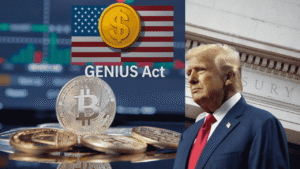President Donald Trump’s administration has unveiled a sweeping redesign of federal student loan repayment rules, replacing the existing framework with what the White House calls a “simpler and fairer” approach. The proposal, announced in early August, eliminates the Saving on a Valuable Education (SAVE) income driven plan and consolidates repayment into just two options: the traditional Standard Repayment Plan and a revised income based Repayment Assistance Plan (RAP).
Key Takeaways for Savers
- Trump’s plan simplifies repayment options to just two, but removes income protections that kept many borrowers afloat under previous programs.
- Students in high cost graduate programs now face lower borrowing limits, potentially pushing them into expensive private loans or out of school entirely.
- Analysis suggests some borrowers could pay up to $3,000 more each year and may face longer paths to forgiveness, effectively extending their debt burden into retirement.
- Policymakers should guard against unintended fallout from increased defaults, deeper inequality and strained public sector workforces.
Under the proposed rules, graduate and professional school borrowing will face stricter limits: $100,000 for most graduate degrees and $200,000 for fields such as medicine and law. Forgiveness timelines would also be extended, requiring borrowers to make payments for a longer period before any remaining debt is discharged.
Borrower advocates warn that these changes could reverse years of progress in making higher education more affordable. The Student Borrower Protection Center (SBPC), in a statement reported by Forbes, called the plan a “debt trap” that would push millions into decades of repayment with little prospect of relief. Other groups have argued that the elimination of SAVE, which capped payments at a set percentage of income and forgave balances sooner for many low income borrowers, could sharply raise monthly bills for those already struggling.
The White House maintains that the overhaul is aimed at “restoring fiscal responsibility” to the student loan program while encouraging faster repayment. However, according to policy analysts, the immediate effect is likely to be higher annual costs for many borrowers, especially those with large graduate school debts. This trade-off between budget discipline and affordability is already fueling a heated debate in Washington.
Table of Contents
The Current Strain on Borrowers Before Any Changes Take Hold
Even before Trump’s plan takes effect, millions of borrowers are already grappling with rising loan costs. Interest accrual has resumed on nearly eight million borrowers enrolled in the SAVE plan, a shift that could add more than $3,500 per year to the typical repayment burden, according to an analysis by MarketWatch that cited figures from Senate Democrats.
Compounding the strain is widespread confusion over repayment amounts and plan eligibility. Since the Supreme Court struck down the earlier debt forgiveness proposal, the Department of Education has been adjusting rules, processing backlogged applications and updating guidance sometimes with little notice. Borrower advocacy groups say this policy whiplash is leaving millions unsure of what they owe or when their next bill is due.
“It feels like the rules change every few months and every time, the payment goes up,” one borrower in California told MarketWatch, describing how shifting from SAVE to an income based plan could nearly double her monthly bill. The uncertainty is forcing some borrowers to cut spending on essentials or take on additional work just to stay current.
Economists warn that with household budgets already under pressure from inflation and high interest rates, these repayment shifts could further slow consumer spending. For lower income households, in particular, the added burden risks pushing them into deeper financial instability long before any of Trump’s proposed changes are formally implemented.
Comparison Table: Old vs. New Loan Rules
Feature | Under SAVE / Income Driven Plans | Under Trump’s New Student Loan Overhaul Plan |
|---|---|---|
Available repayment options | Multiple (SAVE, PAYE, REPAYE, IBR) | Only Standard and Repayment Assistance Plan (RAP) |
Forgiveness timeline | As short as 10–20 years for many | Extended to 30 years for remaining balances |
Graduate borrowing cap | No strict cap tied to degree cost | $100K for most degrees; $200K for professional fields |
Fee and interest safeguards | Payments based on income | Monthly payments may rise above living costs |
Risk of long term debt | Lower for low income borrowers | Higher for many especially those with high balances |
Graduate and Professional Students Could Be Hit Hardest
One of the most controversial parts of Trump’s student loan overhaul is the new borrowing caps for advanced degrees. Under the proposal, graduate students would be limited to $100,000 in total federal borrowing, while those pursuing professional degrees in high cost fields such as medicine or law could borrow up to $200,000.
While these limits may sound generous at first glance, they fall well short of the true cost of attendance for many programs. A Vox analysis notes that tuition alone for a four year medical program can exceed $250,000, not including living expenses, textbooks or licensing fees. For law students at top-tier schools, annual costs can surpass $90,000, meaning that the new caps could leave them short by tens of thousands before graduation.
Education policy experts warn that this could create access barriers for students from low and middle income families, who may have no choice but to turn to higher interest private loans to cover the gap. Such loans often lack the flexible repayment terms and income based protections available in federal programs.
The implications go beyond individual borrowers. As reported by The Guardian, healthcare industry leaders have raised concerns that tighter borrowing limits could worsen shortages in critical professions, particularly in rural areas already struggling to attract doctors and specialists. Similar fears are emerging in education and public interest law, where salaries often do not justify the additional private debt students may have to take on.
“We have got a tsunami of challenges already to deal with. It will be made worse by a lack of access to reasonably priced student loans.” — David Bergman, senior vice president at the American Association of Colleges of Osteopathic Medicine, quoted in Axios
Advocacy Groups Warn of Higher Bills and Longer Debts
Borrower advocacy groups have been quick to highlight the financial risks they see in Trump’s plan. The Student Borrower Protection Center (SBPC), citing internal calculations shared with Forbes, estimates that some borrowers could face nearly $3,000 in additional annual costs under the new repayment structure. These added costs stem from the elimination of the SAVE plan’s income protections and the extension of repayment timelines.
In a statement to Forbes, SBPC Executive Director Mike Pierce said the plan “undermines decades of progress toward affordable higher education” and would “lock millions into repayment for life.” Other advocacy organizations, such as the National Consumer Law Center, have echoed these concerns, warning that the changes will disproportionately harm first generation college graduates and students from disadvantaged backgrounds.
Critics argue that by extending forgiveness timelines , in some cases to 30 years, the plan effectively turns student loans into permanent financial obligations for many borrowers. They point out that these borrowers will pay far more in interest over time, even if their monthly payments appear lower at the start.
While the White House insists the goal is to simplify the system and encourage personal responsibility, borrower advocates see it as shifting the cost of higher education onto families at a time when wages have not kept pace with tuition growth. According to a 2024 report from the College Board, average tuition for private universities has risen more than 20% in the past decade, even after adjusting for inflation making the stakes of repayment policy changes all the higher.
“If we do not have physicians who are able to practice, who are able to do their residencies and go to medical school and deliver that care across the country, that will affect patients and care.” — Danielle Turnipseed, chief public policy officer at the Association of American Medical Colleges, quoted in Axios
What Education Economists and Policy Analysts Are Seeing Ahead
Education economists say the changes in Trump’s student loan plan could reshape the higher education landscape for decades and not necessarily in ways that benefit all students.
A review by the Brookings Institution found that the shift from income driven repayment plans like SAVE to a more limited two option system could significantly increase lifetime repayment amounts for many borrowers, particularly those with modest incomes and high graduate debt. The report warns that such policies tend to exacerbate income inequality, since lower income graduates take longer to repay and accrue more interest over time.
According to an analysis from the Urban Institute, one of the most immediate effects could be a decline in enrollment in professional and graduate programs, especially among low income and minority students. The research highlights how access to affordable financing is closely tied to educational mobility and that cutting back loan options can have a chilling effect on applications to high cost programs.
Policy analysts also point to the loss of built in safety nets from income driven repayment plans. As noted in a National Bureau of Economic Research paper, income based protections have historically prevented defaults during economic downturns, helping borrowers weather periods of unemployment or reduced wages. Removing these features could increase default rates, with ripple effects on household credit scores and access to future financing.
The Wider Risks and the Uncertain Path Forward
Beyond individual borrowers, the proposed changes could have macro level consequences for the U.S. economy. If graduate borrowing becomes more constrained, universities may face declining enrollment in high cost programs, forcing some to raise tuition for remaining students or cut offerings entirely. This could hit sectors like healthcare, education and public service areas already facing workforce shortages.
A Congressional Budget Office projection indicates that greater reliance on private student loans, which often carry higher interest rates and fewer protections, could increase total household debt burdens over the next decade. Since private loans cannot be discharged in bankruptcy under current law, this debt is more likely to persist long term, adding pressure to family finances and reducing consumer spending capacity.
Politically, the plan is already drawing pushback from Democratic lawmakers and advocacy groups. Several senators have urged the administration to reconsider the most restrictive provisions, citing risks to educational equity. However, as reported by The Hill, the White House remains firm that the overhaul is necessary to “restore fiscal responsibility” and “end abusive lending practices.”
Still, the path forward is uncertain. If the policy faces court challenges or legislative opposition, its implementation could be delayed or altered. Advocacy groups are preparing legal arguments on grounds that the changes undermine Congressional intent in existing student aid laws. Meanwhile, students and universities are left planning for multiple possible futures, one where federal graduate borrowing is sharply curtailed and another where political pressure forces revisions before the rules take effect.
Author Insight

Dileep K Nair CMA
Senior Editor & Expert Reviewer
In my experience dealing with various consumer segment and policy research matters, I have seen many reforms that promised to streamline but ended up strangling access, from early student loan repayment redesigns in the 1990s to cuts in Pell Grant eligibility a decade ago. The current plan looks like clean policy, but the devil is in the trade-offs. Simplification without safeguards sometimes shifts costs onto the most vulnerable and we’ve seen that cycle repeat before.
The policy makers should keep an eye on both policy design and real world impact not just for prudence but it is essential for ensuring that promises of reform do not become burdens in disguise.
Trust and Transparency Disclaimer
This news article is based on information from credible public sources including Reuters, USA Today, and Investopedia, as of the date of publication. Market conditions, policy details, and implementation timelines may change, so readers are encouraged to verify independently before making financial decisions. GlimMarket has no financial stake in any entities mentioned in this article, and editorial coverage is not influenced by commercial relationships. This is not financial advice; consult a qualified advisor for personalized guidance on retirement investments.
About the Authors

Dileep K Nair CMA (US)
Senior Editor & Expert Reviewer
Dileep K Nair is a Certified Management Accountant (CMA) from IMA, USA and brings…

Archana N
Senior Writer & Content Strategist
Archana N is a seasoned content strategist and senior writer with over 12 years of experience in business content…
GlimMarket Editorial Team
Editors, Writers, and Reviewers
The GlimMarket Editorial Team is responsible for developing and maintaining the…
Related Articles

US–EU Trade Deal Brings 15% Tariff on Imports: What It Means for Businesses, Consumers, and Investors

Historic US–EU Trade Deal Slaps 15% Tariff on EU Imports: Who Wins and Who Loses?

India, UK Sign Landmark Free Trade Agreement: 99% Tariff Free Access, Visa Boost, $34 Billion Trade Surge Expected

Fed Governor Waller Pushes for July Rate Cut Amid Internal FOMC Split

Trump Signs GENIUS Act Into Law, Setting First Federal Stablecoin Rules

Trump Signs One Big Beautiful Bill into Law: Here’s Why It Matters You
Clean Books. Clear Decisions.
Let us take care of your numbers so you can take better care of your business.
What to Read Next
Explore expert guides on funding, growth, history, and step-by-step strategies for success.
You Might Also Like
In our commitment to ensuring accuracy and credibility, we prioritize the use of primary sources to support our reporting. This includes white papers, government data, original reporting, and interviews with industry experts. We also reference original research and findings from reputable publishers when appropriate. We always ensure that proper attributions and citations are provided with source links, within the article itself, to uphold transparency and fair practice. To learn more about the standards we uphold in producing accurate and unbiased content, please refer to our Editorial Policy & Guidelines.













